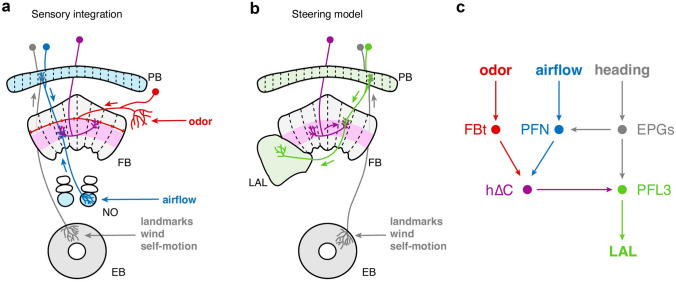Fig. 5.
Olfactory navigation circuits within the central complex. The fan-shaped body has been proposed to integrate odor and wind direction signals to generate a goal-direction signal for navigation. a Compass neurons (EPGs, gray) carry a multimodal representation of heading and provide input to the fan-shaped body (FB) through the protocerebral bridge (PB). Columnar inputs to the fan-shaped body (PFNs, blue) receive heading input from the PB and airflow information from the noduli (NO). Tangential inputs to the fan-shaped body (red) carry non-directional odor information. Local neurons (h∆C, purple) receive input from both columnar neurons and tangential neurons and show odor-gated wind-direction tuned signals. b PFL3 neurons (green) receive phase-shifted heading information from the PB and indirect input from local neurons. They are proposed to control steering through their outputs to the LAL. c FB circuits integrate odor, airflow, and heading representation to direct navigation.
(Adapted from Hulse et al. 2021; Lyu et al. 2022; Lu et al. 2022; Currier et al. 2020; Matheson et al. 2022.)

